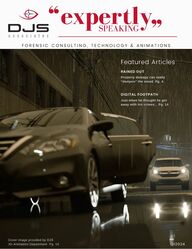
Return to flip book view
Why are zipline injuries continuing to rise? Answer:because braking-related injuries are not being stopped.Fortunately, the 2023 Association for Challenge CourseTechnology (ACCT) standards soon to be released arefinally addressing the issue with new zipline brakingrequirements and eliminate zipliner hand braking as one ofthree options. The current standards require a minimum ofa 3:1 factor of safety (FoS); however, ACCT/AmericanNational Standards Institute (ANSI) 2019 and AmericanSociety for Testing and Materials (ASTM) F2959 require aprimary and secondary brake (2:1), or a fail-safe brakingsystem (2:1).What is a 3:1 factor of safety (FoS)?A FoS of 3 means that it is 3 times stronger than ittheoretically needs to be. This is a minimum for FoS toallow for unforeseen circumstances and any differencebetween the theoretical and the practical (as these maynot match exactly).In a 2020 virtual ACCT presentation, Cameron Annas(Granite Insurance, NC) reported that 6-7 ziplineaccidents occurred per 100,000 zipliners, and over halfwere braking-related. In the Adventure Park InsiderSummer 2023 magazine, Mr. Annas predicted 2022zipline accident rates would double with 15 accidents per100,000 zipline rides. My experiences with ziplineaccident investigations support this prediction andsuggest that braking-related accidents continue toaccount for more than half of reported incidents.Industry groups estimate there are more than 400commercial zip lines in the U.S. across 48 states (theexceptions being Michigan and North Dakota) that servicemore than 70 million rides annually. The 2022 predictionmeans that over 10,000 zipline accidents occurred lastyear. Therefore, E-brakes should be required for ziplinesto pass inspection if we want accidents and insurancepolicies reduced. The problem with today's two-wheel zipline trolleys ismomentum (p=mv). In a conversation with technical Michael ‘Troy’ RichardsonAdventure Ride and Course Expert Witnesswith DJS Associates, Inc.experts@forensicDJS.com 215.659.2010LookingFor anExpert?BROKEN BRAKING SYSTEMSMichael Richardson, Adventure Ride Expert partners from Petzl, a manufacturer of ziplineequipment, I was advised that their tandem-speed pulleycould be calculated at 95% gravity (9.3 m/s2).Engineers know everyone reaches the lowest point of azipline at nearly the same time (gravity is constant), butonce zipliners are going uphill, problems arise; stoppingtheir mass (m) becomes the variable that can triple azipliner's momentum (p). Most braking accidents involveheavier zipliners.The standard should require zipliner arrival speed testingusing the zipline course's maximum and minimumweight requirements. Safety managers and third-partyinspectors should also test and document zipline arrivalspeeds. These tests should be conducted whentemperatures are the lowest of the season and monitortemperatures, which can impact arrival speed due tothermal expansion or contraction of steel zipline cables.Zipline owners and guides should also monitor dailyspeed data using a standard GPS watch for running orcycling (such as a Garmin Forerunner).Arrival speeds for minimum and max-weight zipliners(e.g., 75 lbs. versus 250 lbs.) are not the same on anyzipline using two-wheeled trolleys. Some companieshave reported a 5-MPH variation. The ACCT 2019standards say anything over 5-MPH requires a stand-alone emergency brake or EAD (Emergency ArrestDevice). Stand-alone E-brakes are not brakes thatsomeone resets. A spring braking system is an exampleof a stand-alone EAD, and the 3:1 safety factor stillapplies.What can the ACCT do to cut zipline accidents in half?The answer is simple: Require E-brakes on every zipline,because accidents can be reduced by 50%.Contact our case intake team!215.659.2010 experts@forensicDJS.com